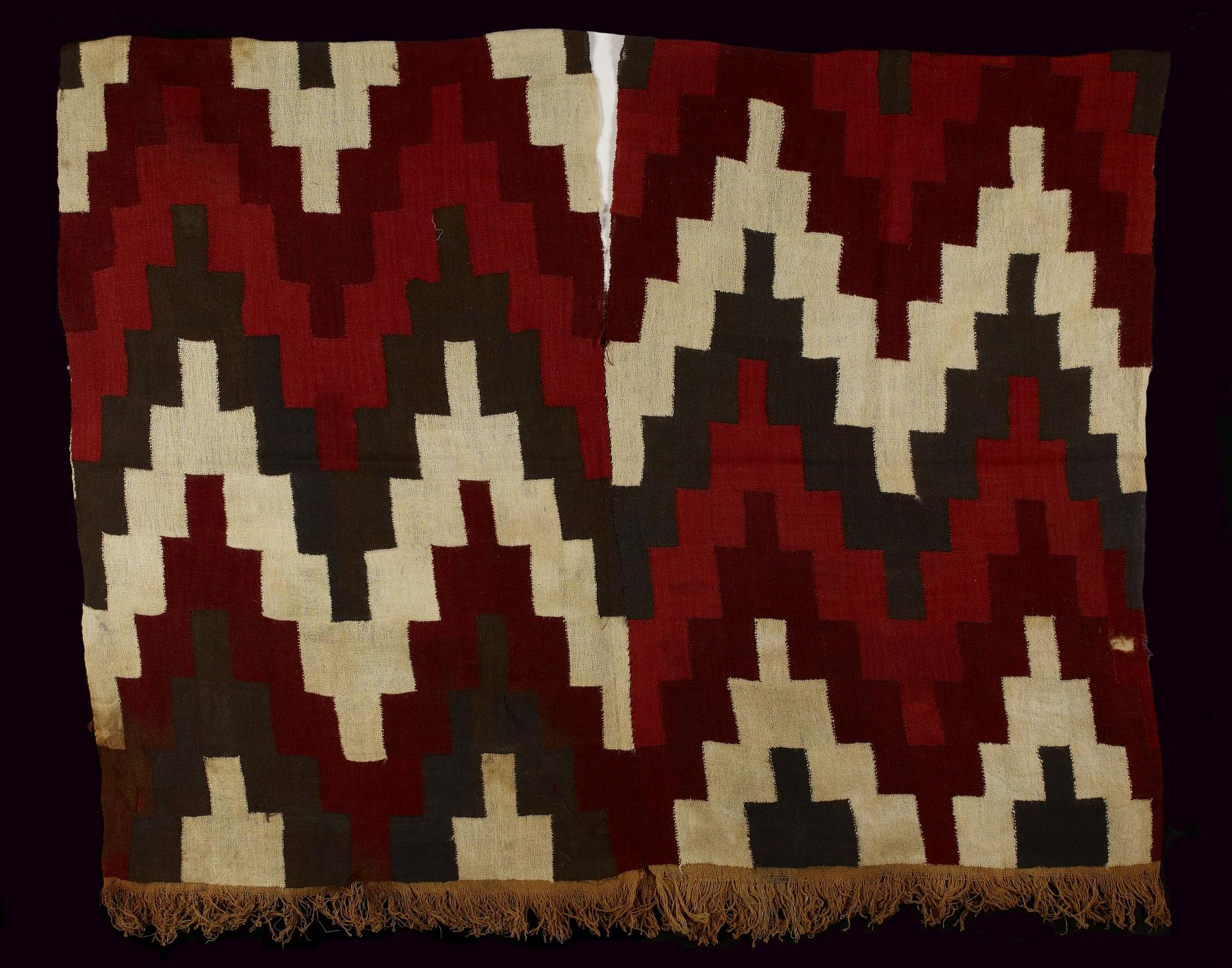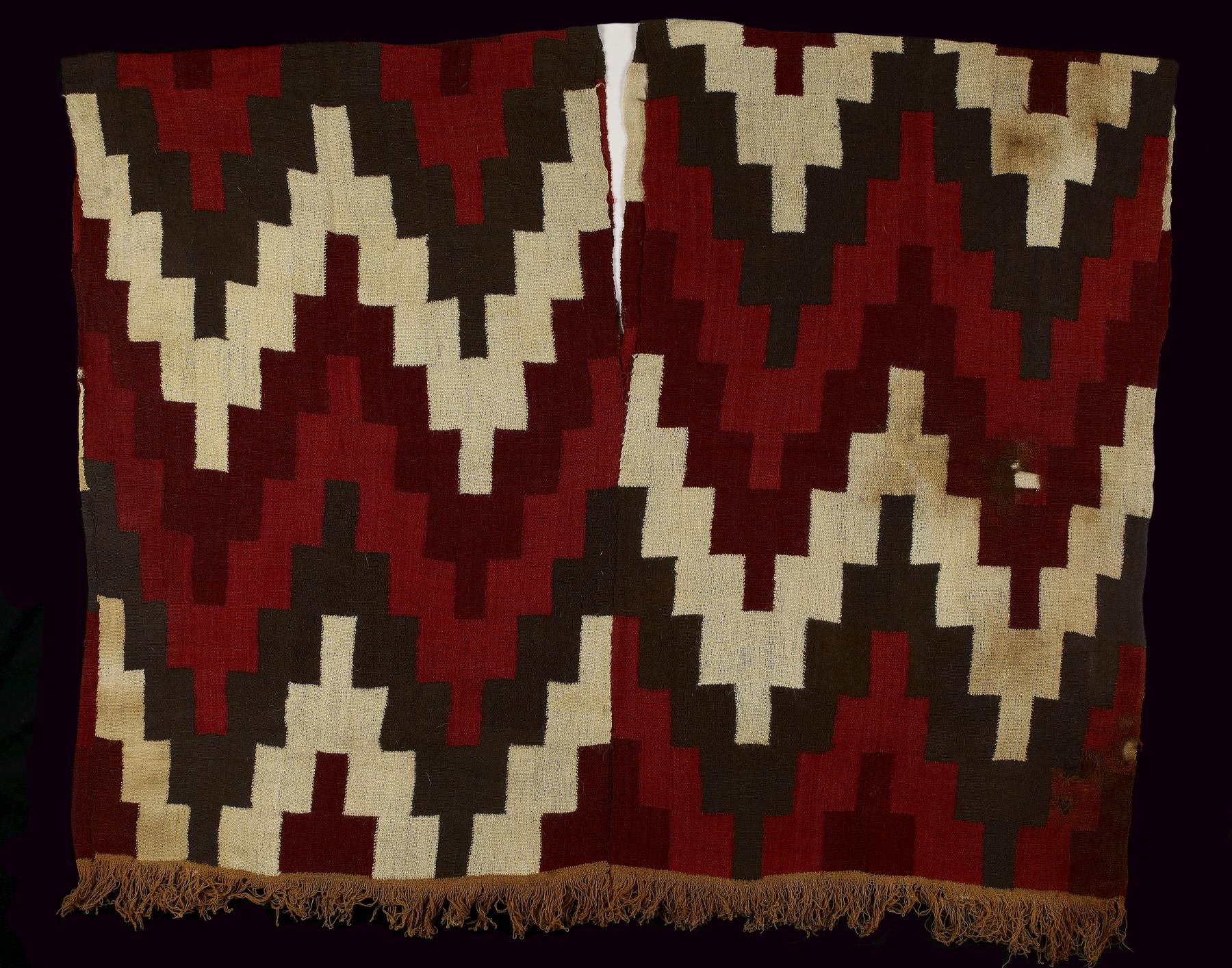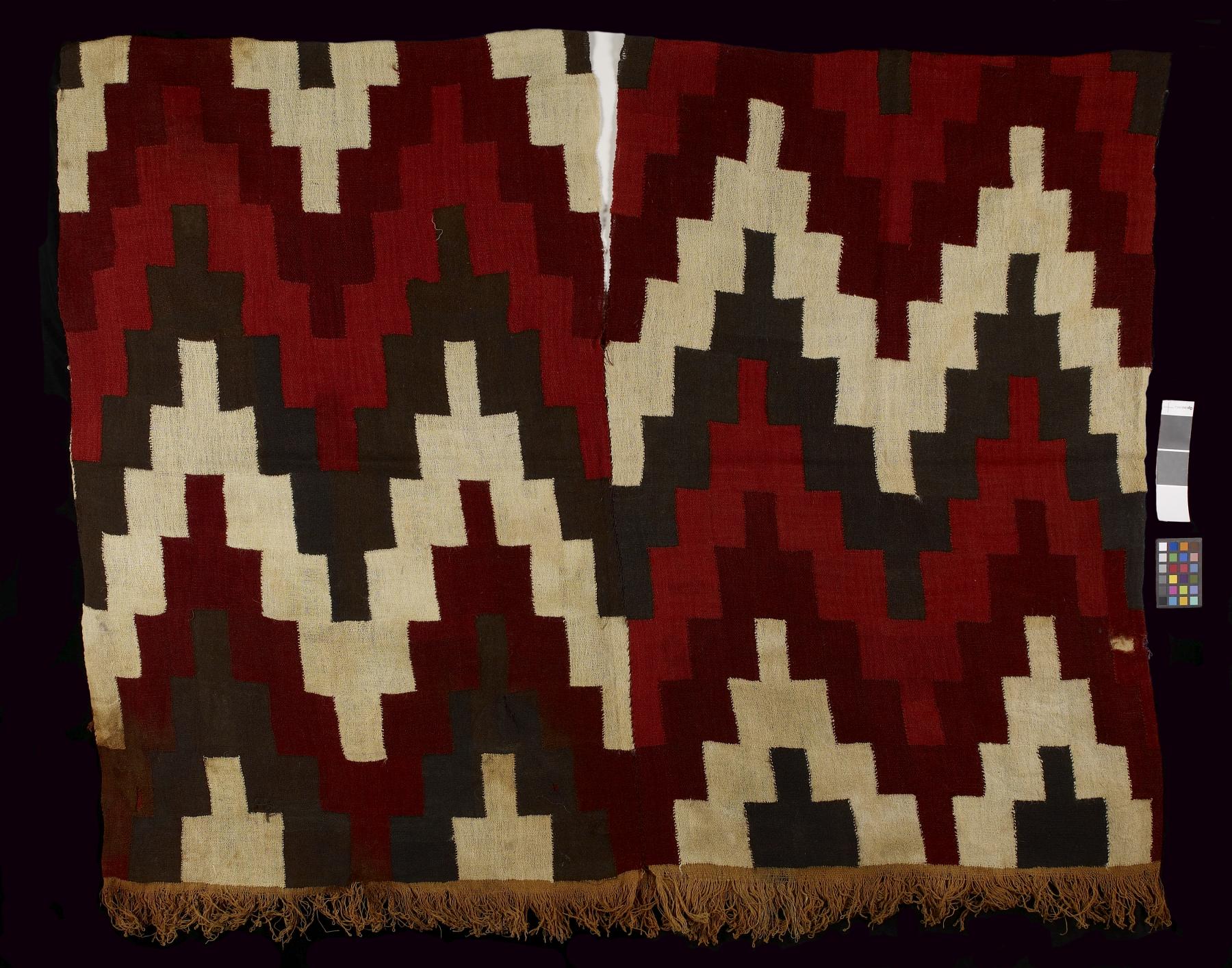Tunic
(Ancient Americas )
Throughout the pre-Columbian Andes, the tunic was an essential element of male dress, not just a garment, but also a visible means of displaying ethnic identity, social status and rank. Tunics were created by weaving two long strips of cloth, then doubling each, sewing up a center line of the tunic up to a neck hole, and the sides to close the garment under the wearer’s arms. Such a well-preserved tunic was likely included as an offering in a grave or tomb. The visual power of this piece stems from its combination of broad bands of colors in stepped patterns.
Provenance
Provenance (from the French provenir, 'to come from/forth') is the chronology of the ownership, custody, or location of a historical object. Learn more about provenance at the Walters.
Purchased by Georgia de Havenon, New York; given to Walters Art Museum, 2016.
Geographies
Peru, Nasca (Place of Origin)
Measurements
H: 50 13/16 × W: 42 5/16 in. (129 × 107.5 cm)
Credit Line
Gift of Georgia and Michael de Havenon, 2016
Location in Museum
Not on view
Accession Number
In libraries, galleries, museums, and archives, an accession number is a unique identifier assigned to each object in the collection.
In libraries, galleries, museums, and archives, an accession number is a unique identifier assigned to each object in the collection.
2011.20.1








